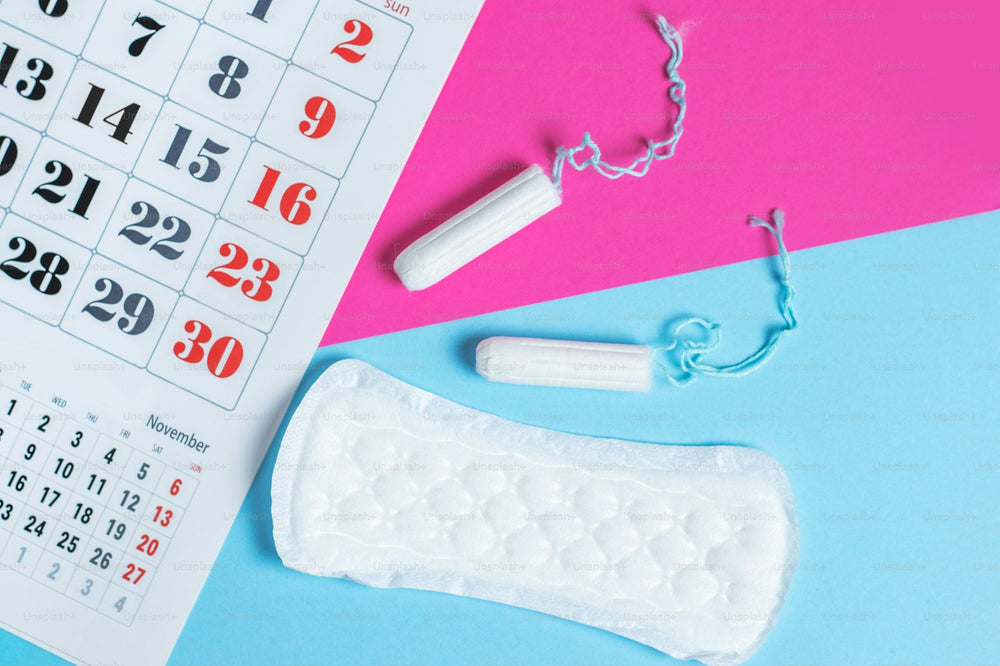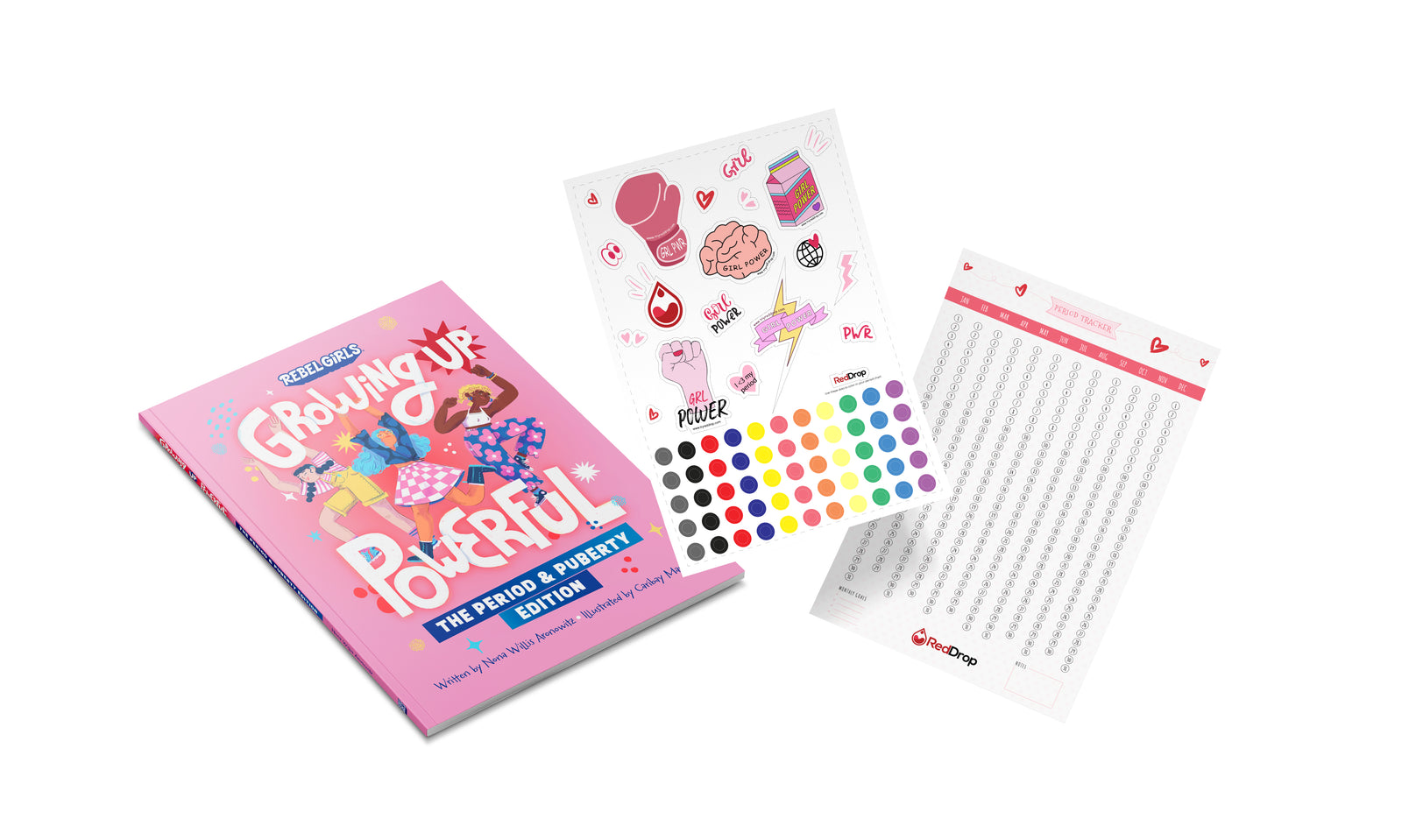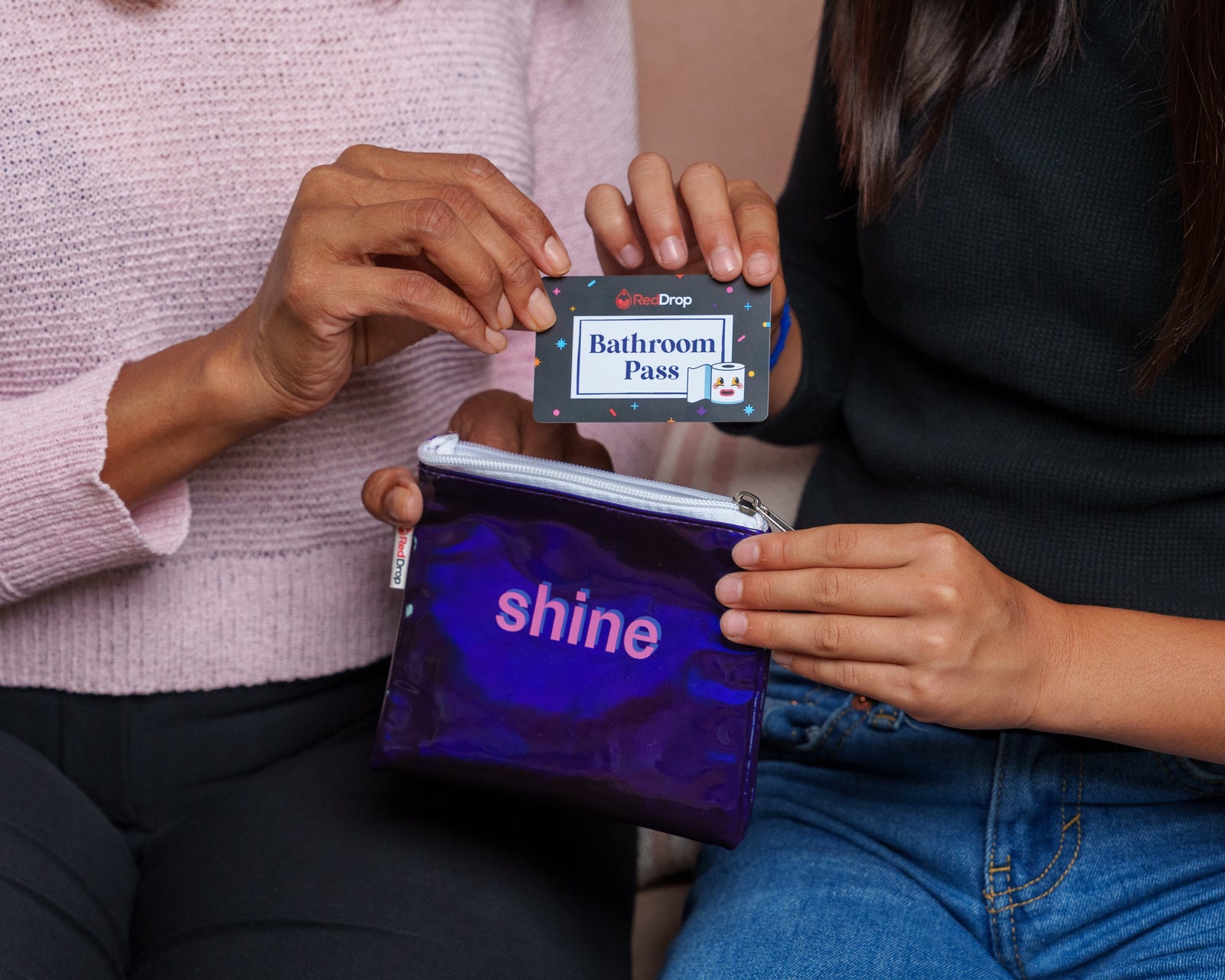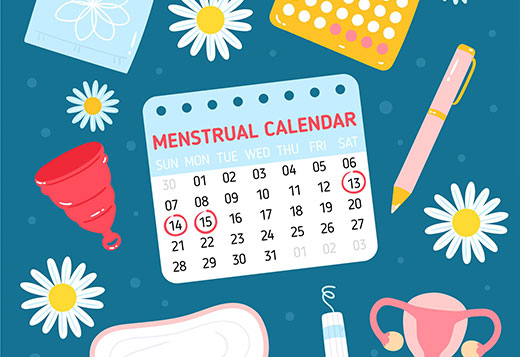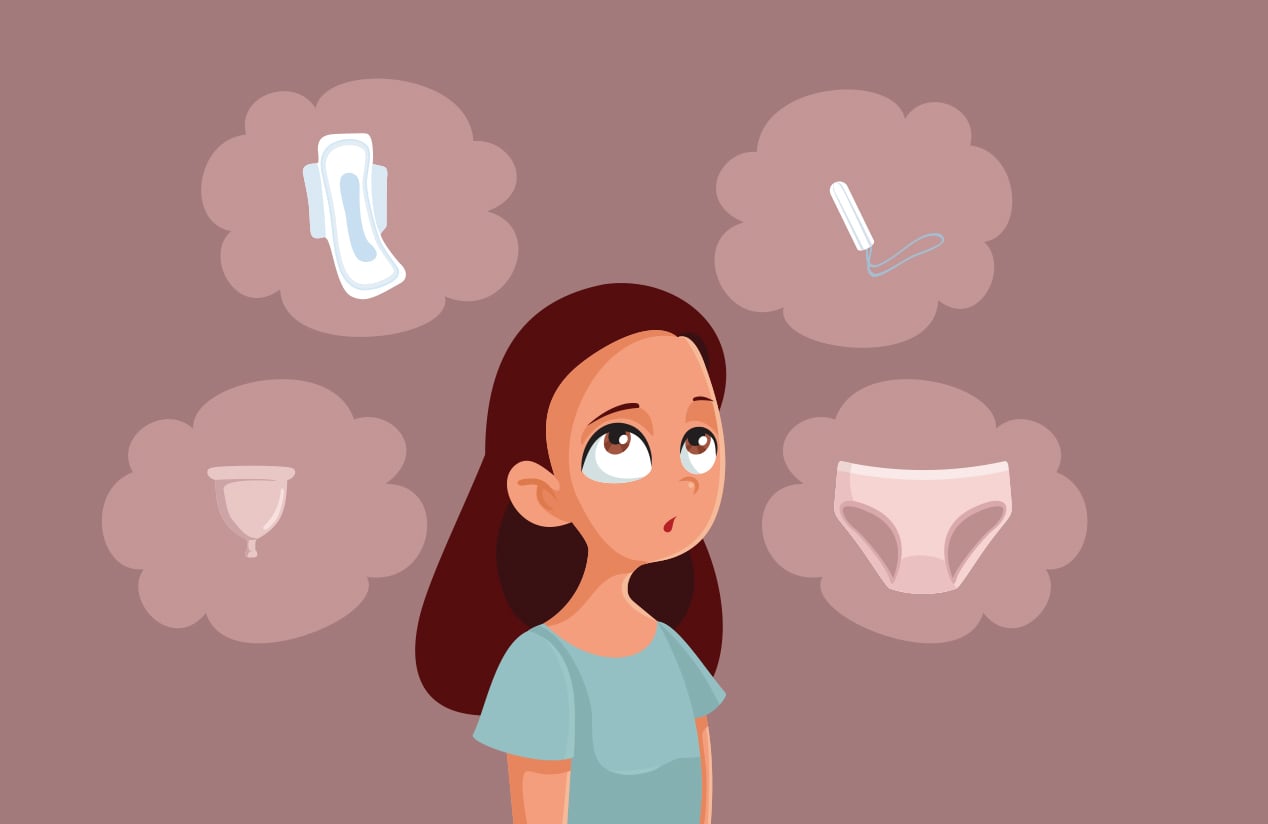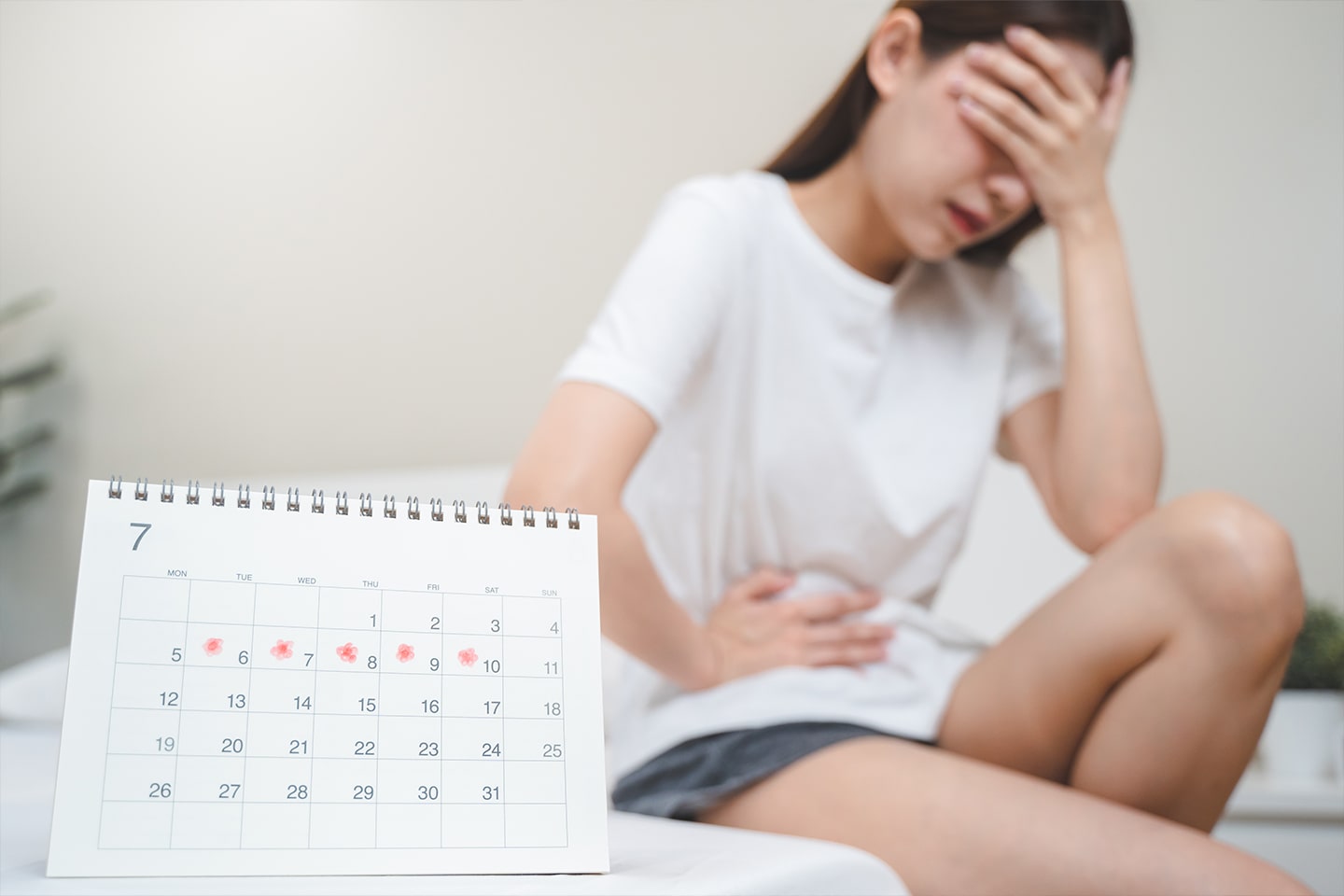One of the most empowering things you can do for your period health is simple: track your cycle. I know it might sound like extra work on top of everything else you’re managing, but hear me out. Your period is like a biological hormonal clock that tells you so much about what’s happening in your body. When you track it, you’re not just marking days on a calendar. You’re learning to understand your body’s unique patterns and rhythms.
At Scarlet by RedDrop, we believe that knowledge is power, and tracking your cycle is one of the best ways to build that knowledge. Whether you’re brand new to periods or you’ve been menstruating for a few years, understanding how to track your cycle helps you predict, prepare, and advocate for your health.
Understanding Your Cycle Phases
Before we dive into how to track, let’s talk about what you’re actually tracking. Your menstrual cycle has four distinct phases, each with its own hormonal profile and characteristics.
Menstrual Phase (Days 1-5)
This is when you’re actually bleeding. Day 1 of your period is considered Day 1 of your entire cycle. During this phase, your hormone levels are at their lowest, which is why you might feel more tired or need extra comfort and rest.
Follicular Phase (Days 1-13)
This phase actually overlaps with menstruation but continues after your period ends. Your body starts producing more estrogen, which gradually increases your energy and mood. You might start feeling more optimistic and ready to take on new challenges as this phase progresses.
Ovulation Phase (Days 14-16)
This is typically when you feel your best! Estrogen peaks right before ovulation, giving you higher energy, better mood, and often that natural glow everyone talks about. This is your power phase when you feel most confident and capable.
Luteal Phase (Days 17-28)
After ovulation, progesterone rises and estrogen drops. This is often when PMS symptoms appear. You might feel more introspective, need more comfort, and have less patience for drama. This phase gets a bad reputation, but it’s actually when you can be incredibly productive with focused, detail-oriented work.
The Reality for Teen Tracking
Here’s something super important to understand: when you first start your period, the first two years are typically very irregular. Your body is still learning how to regulate hormones, and your cycle is finding its rhythm. This can make tracking feel frustrating because you’re not seeing the neat, predictable 28-day pattern that health class might have taught you about.
But here’s why you should track anyway: even irregular cycles have patterns if you look closely enough. Maybe your cycle is always between 25-35 days. Maybe you notice that stressful weeks make your period come earlier. Maybe you realize your flow is heavier during certain months. These patterns matter, even if they’re not perfectly regular.
The goal of tracking during these first years isn’t to achieve perfect predictability. It’s to get into the habit of paying attention to your body and gathering information that will be valuable as your cycle matures.
Why Tracking Matters
For Doctor Visits
You know that question doctors always ask: “When was your last period?” If you’re tracking, you can answer confidently instead of awkwardly trying to remember. You can also share important information like “My periods usually last 5 days but this one lasted 8” or “I’ve noticed my cramps are getting worse over the past few months.”
This information helps healthcare providers understand what’s normal for you and identify any concerns that need attention. Your tracking data turns vague worries into concrete information that doctors can actually use.
For Daily Life Planning
When you have a general sense of when your period might arrive, you can plan ahead. Pack extra supplies before a big trip. Schedule important presentations during weeks when you typically feel your best. Give yourself grace during weeks when you know you’ll be more tired or emotional.
For Understanding Your Body
Your period is your body’s report card on how you’re doing overall. Changes in your cycle can signal stress, illness, or other health issues before other symptoms appear. When you track consistently, you notice these changes faster.
Tracking Methods That Work
Our Scarlet by RedDrop Paper Tracker
We created a paper tracker specifically for teens because sometimes the simplest method is the best method. Our tracker comes with your period education materials and gives you a physical place to record your cycle without worrying about technology, apps, or privacy concerns.
Paper tracking has some real advantages. There’s something powerful about physically writing down information about your body. You can see patterns at a glance, you’re not staring at another screen, and there’s zero concern about data privacy or app companies accessing your health information.
Using Your Regular Calendar
You don’t need anything fancy to start tracking. A regular calendar where you mark the first day of your period with a simple symbol works perfectly. Over time, you’ll be able to flip back through months and see your patterns emerging.
Some people use stickers or colored markers to track different aspects of their cycle. Red for period days, yellow for high energy days, blue for low mood days. Whatever system makes sense to your brain is the right system.
Privacy-First Apps
If you prefer digital tracking, choose apps carefully. Many period tracking apps collect and sell your data, which is a serious privacy concern. I recommend apps like Read My Body, which is encrypted and privacy-focused. Your period information is your private health data and deserves protection.
For those with parents who monitor device usage, consider that many phones have native health tracking built into the operating system. These tend to have better privacy protections than third-party apps and can’t be easily deleted or discovered by others browsing your apps.
What to Track Beyond Just Your Period
Physical Symptoms
Note when you experience cramps, and rate their intensity. Track headaches, bloating, breast tenderness, or fatigue. Write down when your energy feels high versus when you need more rest. Over time, you’ll see which symptoms are consistent parts of your cycle and which might indicate something unusual.
Mood and Emotions
Your cycle affects your emotions in real, measurable ways. Track when you feel happy, sad, anxious, or irritable. Notice when you feel social versus when you prefer alone time. This information helps you understand that your emotions aren’t random. They’re often connected to where you are in your cycle.
Energy Levels
Some days, you wake up ready to conquer the world. Other days, getting out of bed feels impossible. Track your energy patterns and you’ll likely notice they align with your cycle phases. This knowledge helps you plan your schedule and give yourself grace on lower energy days.
Sleep Patterns
Notice when you sleep well versus when you have insomnia or restless nights. Period phases can affect sleep quality, and tracking this helps you understand why some weeks you feel rested and others you feel exhausted.
Food Cravings
Those chocolate cravings aren’t random! Track what foods you’re drawn to during different cycle phases. You might notice patterns that help you prepare and stock up on foods your body asks for during certain times.
Flow Patterns Note whether your flow is light, medium, or heavy each day. Track the color and consistency if you’re comfortable doing so. Changes in flow patterns can indicate health changes worth discussing with a doctor.
Understanding Your Personal Patterns
After tracking for a few months, start looking for your unique patterns. Maybe you notice that you always get a headache two days before your period starts. That’s valuable information! Next month, you can prepare with pain relief and self-care before the headache even hits.
Perhaps you realize that your skin always breaks out during your luteal phase. Now you know to start your acne prevention routine earlier in your cycle. Or maybe you notice that your anxiety spikes right before ovulation. Understanding this pattern helps you recognize that the anxiety is hormonal and temporary, not a sign that something is wrong in your life.
Your patterns are as unique as you are. Some people have 25-day cycles, others have 35-day cycles. Some experience intense PMS, others barely notice premenstrual changes. There’s no “right” way to have a cycle, but there is your way, and tracking helps you understand it.
Using Tracking Data to Predict and Prepare
Once you have a few months of data, you can start making educated guesses about when your next period will arrive. Even with irregular cycles, you can often predict a window of time when your period is likely to start.
This prediction helps you prepare. Stock up your emergency kit. Make sure you have supplies at school. Maybe schedule that beach day for a week when you’re less likely to be on your period. Pack extra supplies before traveling. Give yourself permission to say no to social plans if you predict you’ll be feeling low energy.
Tracking also helps you notice when something is off. If your typical 30-day cycle suddenly becomes 45 days, that’s information worth paying attention to. If your usual light flow becomes very heavy, tracking data helps you recognize and communicate this change.
When Tracking Helps Healthcare Conversations
Doctors and healthcare providers love it when patients track their cycles. It turns abstract concerns into concrete data that they can use to help you. Instead of “My periods are weird,” you can say “My cycles range from 28-42 days, and I’ve noticed increasing cramping over the past three months.”
If you need to see a healthcare provider about period concerns, bring your tracking information. It dramatically improves the quality of care you receive because providers can see patterns and make informed recommendations based on your experience, not just general guidelines.
Tracking data is especially valuable if you’re experiencing concerning symptoms like very heavy bleeding, severe pain, or significant mood changes. The information you’ve gathered helps providers determine whether what you’re experiencing is within the range of normal for you or indicates something that needs attention.
Making Tracking a Habit
The best tracking method is the one you’ll actually use consistently. Start simple. Just marking the first day of your period on a calendar is better than an elaborate system you abandon after two weeks.
Set reminders if you need them. Some people check in with their tracking every night before bed. Others update their information weekly. Find a rhythm that works for your life and personality.
Don’t stress about perfect tracking. If you forget for a few days or can’t remember exactly how you felt on Tuesday, that’s okay. Imperfect data is still more valuable than no data at all.
Privacy and Safety Considerations
Your cycle information is private health data. Be thoughtful about who has access to your tracking information, especially if you’re using digital methods. Consider whether you’re comfortable with parents, siblings, or others potentially seeing your period tracking.
If privacy is a major concern, paper tracking that you keep in a private space might be your best option. You have the right to keep your health information private, even from family members, as long as you’re staying safe and healthy.
Growing with Your Tracking Practice
As you get more comfortable with basic tracking, you might want to add more detailed information. Some people start tracking exercise, stress levels, social activities, or other factors that might influence their cycle.
The goal isn’t to become obsessed with tracking every detail of your life. It’s to gather enough information to understand your body’s patterns and support your health effectively.
Your tracking practice will evolve as you do. What works when you’re 12 might feel too simple when you’re 16. That’s perfect. Your tracking should grow and change along with your understanding of your body.
Final Thoughts on Cycle Tracking
Your period is your body’s way of communicating with you every month. Tracking is simply learning to listen and understand what your body is saying. It transforms your period from something that just happens to you into something you’re actively understanding and managing.
At Scarlet by RedDrop, we believe that every teen deserves to understand their body’s unique patterns and rhythms. Whether you use our paper tracker, a calendar, or a privacy-focused app, the act of paying attention to your cycle is an act of self-care and self-advocacy.
Your cycle is your biological hormonal clock, keeping time with your body’s natural rhythms. When you learn to read that clock, you gain confidence, predictability, and the power to support your body through every phase of your cycle.
Start tracking today, even if it’s just marking one day on a calendar. That simple act begins building the knowledge and body wisdom that will serve you throughout your entire menstrual life.
Photo: Getty Images for Unsplash
Sterling P. Jones is a wellness writer and beauty expert who believes in empowering women through education. As the founder of The Beauté Study, she teaches women how beauty and wellness practices can be tools of personal power. Sterling specializes in cycle-conscious living and writes about the intersection of beauty, wellness, and feminine health. Her approach to period education combines cultural insight with practical guidance, helping young women understand their bodies as sources of strength rather than shame.
